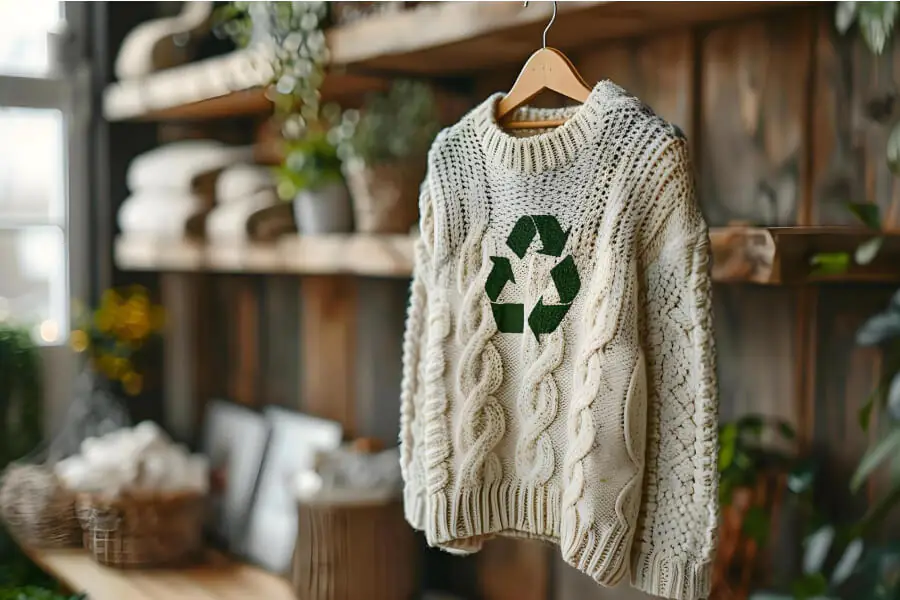In today’s world, the fashion industry is becoming increasingly aware of its environmental and social impact.
Sustainable fashion, also known as eco-fashion, is a growing movement that encourages consumers to make conscious, ethical choices in their clothing.
Learning some practical tips for creating an ecological and ethical wardrobe, is perfect for those in Spain who are looking to reduce their fashion footprint and contribute to a more successful future for sustainable fashion.
The Impact of Fast Fashion on the Environment
Fast fashion has revolutionized the way we shop, offering inexpensive, trendy clothing at the expense of the planet. The environmental consequences of fast fashion are vast, including excessive water use, pollution from toxic dyes, and the accumulation of textile waste in landfills. In addition, the fast fashion model often exploits garment workers, paying them low wages in poor working conditions.
Introduction to Sustainable Fashion
Sustainable fashion refers to clothing that is designed, manufactured, and distributed with the environment in mind. It prioritizes eco-friendly materials, ethical labor practices, and production methods that minimize waste and reduce the industry’s overall carbon footprint. By choosing sustainable fashion, consumers support the movement toward a greener planet.
Sustainable fashion focuses on reducing the environmental and social harm caused by the fashion industry. This includes using eco-friendly materials, minimizing waste, and ensuring fair labor practices. By shifting to sustainable fashion, you can make a positive impact on both the environment and the people who produce your clothes.
Benefits and Importance of Ethical Fashion
Ethical fashion goes hand in hand with sustainability. It ensures that workers are paid fair wages and work in safe conditions. By supporting ethical brands, you contribute to a fairer, more equitable industry while also reducing your carbon footprint.
Why Support Sustainable Fashion?
Supporting sustainable fashion means choosing clothing that aligns with your values. It’s about reducing your environmental impact, supporting fair labor practices, and encouraging the fashion industry to move toward a more sustainable future. Every purchase you make in favor of sustainable fashion sends a message that eco-conscious choices matter.
Building a Sustainable Wardrobe
Evaluation of Your Current Wardrobe
Before buying anything new, take a close look at what you already own. A sustainable wardrobe starts with appreciating and using what you have. Sort through your clothing, assess the pieces you regularly wear, and donate or recycle items that no longer serve you.
Incorporating Sustainable and Ethical Pieces
When it’s time to shop, look for pieces made from sustainable materials like organic cotton, recycled polyester, and linen. Brands that prioritize eco-friendly production methods and transparency in their supply chains should be at the top of your list. In Spain, there are many local and international brands embracing these principles.
Tips for Ethical Shopping
- Buy Less, Choose Better: Focus on quality over quantity. A well-made piece will last longer and reduce the need for constant replacement.
- Second-Hand and Vintage: Shopping second-hand reduces the demand for new clothing production. Spain has a growing second-hand market with options like local thrift stores and online platforms.
- Support Fair Trade and Local Brands: Look for brands that prioritize fair wages and ethical practices. Buying locally also reduces the carbon footprint associated with transportation.
The Role of Minimalism in Sustainable Fashion
Minimalism in fashion means owning fewer, more versatile pieces that can be mixed and matched. This approach encourages thoughtful consumption, reduces clutter, and aligns with sustainable living by promoting quality over quantity. Minimalist fashion helps you create a wardrobe that’s both eco-friendly and stylish.
Caring for Your Sustainable Wardrobe
Proper Clothing Maintenance and Care
Taking care of your clothes is key to maintaining a sustainable wardrobe. Proper washing, drying, and storing can extend the life of your garments. Always follow care instructions, wash in cold water to save energy, and air dry when possible.
Eco-Friendly Cleaning Practices
Use eco-friendly laundry detergents that are free from harmful chemicals. In Spain, many brands offer biodegradable and non-toxic options. Avoid dry cleaning when possible, as it often uses harmful chemicals like perchloroethylene.
Repair and Upcycling Techniques
Instead of discarding damaged clothes, learn to repair them. Simple sewing techniques can fix minor issues like torn seams or missing buttons. If an item no longer suits your style, consider upcycling it into something new, such as turning an old dress into a top.
Engaging in Sustainable Fashion Practices
Swapping and Renting Clothing
Swapping clothes with friends or participating in clothing swaps is a fun and eco-friendly way to refresh your wardrobe without buying new items. Renting clothes for special occasions is another great option, reducing the need to purchase something you’ll only wear once.
Donating and Recycling Garments
When you no longer need an item, donate it to local charities or recycling programs. Many cities in Spain have textile recycling bins, allowing you to dispose of old clothes responsibly. Donating helps extend the life of garments and provides others with affordable clothing options.
Supporting Local and Ethical Brands
Spain has a vibrant community of ethical fashion brands. By supporting these businesses, you contribute to a more sustainable local economy. Look for companies that prioritize eco-friendly materials, sustainable production processes, and fair labor practices.
Creating a Long-Term Sustainable Fashion Strategy
Setting Eco-Friendly Fashion Goals
Start by setting achievable goals for your wardrobe. This might include reducing your fashion consumption, buying only from sustainable brands, or committing to shopping second-hand for the next year.
Developing a Capsule Wardrobe
A capsule wardrobe is a collection of essential, versatile pieces that you can mix and match for different occasions. By focusing on quality over quantity, you can reduce the number of clothes you buy while still having a stylish and functional wardrobe.
Committing to Sustainable Fashion Principles
Sustainable fashion is a long-term commitment. As you continue on this journey, stay informed about the latest developments in eco-fashion, support ethical brands, and encourage others to adopt sustainable practices.
The Future of Sustainable Fashion
Sustainable fashion is more than just a trend, it’s a movement toward a more responsible industry. As technology advances and consumer awareness grows, we can expect to see even more innovations in eco-friendly fabrics, ethical manufacturing processes, and circular fashion models. Sustainable fashion is paving the way for a greener future in the fashion world.
Conclusion
Building an ecological and ethical wardrobe is a rewarding way to make a positive impact on the planet and the people involved in the fashion industry. By following these tips, you can create a stylish, sustainable wardrobe that reflects your values and helps preserve our environment for future generations.
FAQs
Why Sustainable Fashion?
Sustainable fashion helps reduce environmental damage and promotes ethical labor practices, making it a more responsible choice for consumers.
How sustainable is your wardrobe?
A sustainable wardrobe prioritizes quality, eco-friendly materials, and ethical brands, focusing on minimizing waste and environmental impact.
Why does eco-friendly fashion matter?
Eco-friendly fashion reduces resource consumption, pollution, and supports ethical labor practices, helping to combat the negative effects of the fast fashion industry.
How can we reduce our fashion environmental impact?
By buying less, choosing sustainable brands, caring for clothes properly, and recycling or donating old garments, we can reduce our fashion footprint.
This comprehensive guide to sustainable fashion will help readers make eco-conscious decisions, supporting both their style and the environment.







